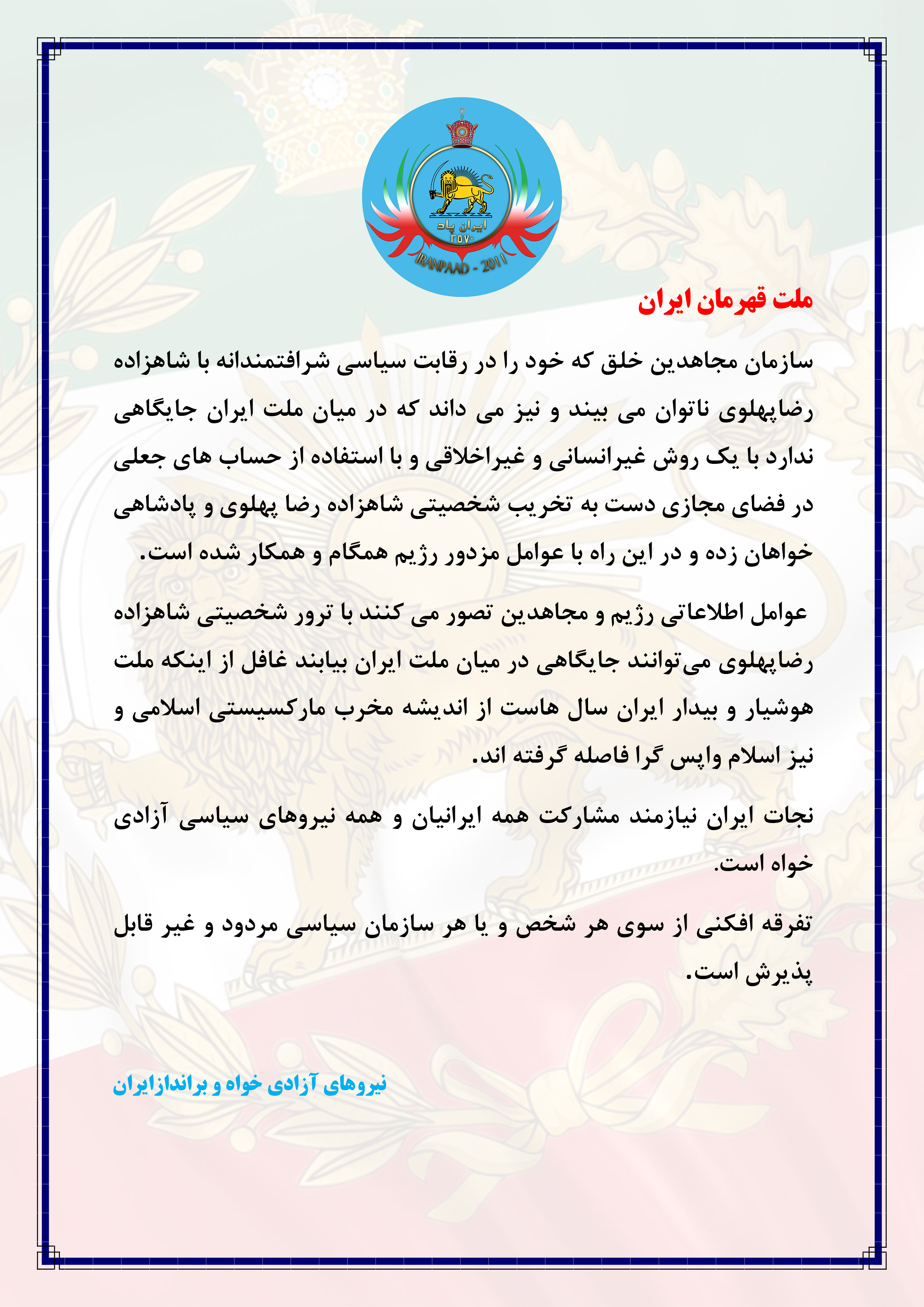
سه جزیره ایرانی در خلیج فارس: مالکیت تاریخی و قانونی
مالکیت سه جزیره استراتژیک در خلیج فارس—تنب بزرگ، تنب کوچک و ابوموسی—مدتهاست که منبع اختلاف بین ایران و امارات متحده عربی بوده است. (UAE). در حالی که امارات متحده عربی ادعای حاکمیت بر این جزایر را دارد، سوابق تاریخی و قانونی به وضوح مالکیت قانونی ایران را تثبیت میکند. این مقاله تاریخچه این جزایر را تشریح کرده و ادعاهای امارات متحده عربی را رد میکند و پایههای واضح حاکمیت ایران بر آنها را نشان میدهد.
۱. پیشینه تاریخی جزایر
تاریخ جزایر تنب بزرگ، تنب کوچک و ابوموسی به قرنها پیش بازمیگردد، که در طول این مدت همواره بخشی از سرزمین ایرانی/پارسی بودهاند. نقشهها، اسناد و معاهدات تاریخی متعددی نشان میدهند که این جزایر از زمان امپراتوری ساسانی (۲۲۴-۶۵۱ میلادی) و در طول دورههای اسلامی بعدی تحت حاکمیت ایرانیان بودهاند.
موقعیت استراتژیک این جزایر که در نزدیکی تنگه هرمز، یک گذرگاه حیاتی برای حمل و نقل نفت جهانی، واقع شدهاند، باعث شده که آنها در طول زمان اهمیت پیدا کنند. نیروهای دریایی ایران اغلب در این آبها گشتزنی میکردند و اسناد تاریخی از سلسلههای صفوی، افشاری و قاجار به طور مداوم نشان میدهند که جزایر توسط مقامات ایرانی مدیریت و اداره میشدند.
۲. پیمانها و مداخلات استعماری
اختلافات سرزمینی بر سر این جزایر تنها در قرن بیستم به وجود آمد، عمدتاً به دلیل مداخلات استعماری. در قرن نوزدهم، بریتانیا بر چندین کشور عربی خلیج فارس، از جمله آنچه اکنون امارات متحده عربی نامیده میشود، قیمومیت برقرار کرد. مقامات بریتانیایی، در پی منافع ژئوپولیتیکی خود در منطقه، گاهی مرزهای محلی را تحت تأثیر قرار میدادند. با این حال، بریتانیاییها هرگز مالکیت رسمی جزایر را به نمایندگی از هیچ یک از حکام عرب برقرار نکردند. در عوض، آنها به حضور و حاکمیت دیرینه ایران اذعان کردند.
یک مثال قابل توجه توافقنامه انگلو-پرسین در سال ۱۹۱۳ است که در آن بریتانیا حاکمیت ایران بر جزایر ابوموسی و تنب را به رسمیت شناخت. پس از خروج نیروهای بریتانیایی از خلیج فارس در سال ۱۹۷۱، ایران بلافاصله کنترل خود را بر جزایر دوباره برقرار کرد، حرکتی که با توافقات انجام شده در دوران استعمار همخوانی داشت.
۳. شواهد قانونی مالکیت ایران
پایههای قانونی مالکیت ایران بر جزایر به طور محکم در حقوق بینالملل ریشه دارد، که تداوم تاریخی، کنترل مؤثر و حکومت مستقر را به عنوان عوامل کلیدی در تعیین حاکمیت شناسایی میکند. ایران برای قرنها کنترل مداوم بر روی تنب بزرگ، تنب کوچک و ابوموسی را حفظ کرده است. این کنترل مداوم یک عامل حیاتی در حاکمیت قانونی است.
در سال ۱۹۷۱، زمانی که نیروهای بریتانیایی خلیج فارس را ترک کردند، ایران بهطور رسمی حاکمیت خود بر جزایر را دوباره تأکید کرد. هر دو جزیره تنب بزرگ و تنب کوچک به طور مسالمتآمیز به قلمرو ایران بازگشتند، در حالی که ایران و شارجه (که اکنون بخشی از امارات متحده عربی است) در مورد ابوموسی به توافقی رسیدند که اجازه مدیریت مشترک را میدهد اما حاکمیت ایران را تضعیف نمیکند. این توافقنامه که توسط هر دو طرف تأیید شده بود، بهطور صریح حقوق ایران بر جزایر را تأیید کرد.
۴. ادعاها و تفسیرهای نادرست امارات متحده عربی
ادعای امارات متحده عربی به جزایر تنها پس از کسب استقلال در سال ۱۹۷۱ ظاهر شد. این ادعاها بر اساس ارتباطات قبیلهای فرضی بود، اما از پشتیبانی قانونی و تاریخی که حقوق بینالملل نیاز دارد، برخوردار نیستند. علاوه بر این، تفسیر امارات متحده عربی از رویدادهای تاریخی اغلب جزئیات حیاتی را نادیده میگیرد، مانند به رسمیت شناختن حاکمیت ایران توسط قدرتهای استعماری و توافقهای قانونی که با حاکمان امارات انجام شده است.
ایران به طور مداوم اعلام کرده است که آماده گفتوگو در این زمینه است، اما به شدت هرگونه پیشنهادی مبنی بر اینکه حاکمیت آن بر جزایر قابل مذاکره است را رد میکند. ادعاهای امارات متحده عربی که هرگز قبل از استقلالش مطرح نشده بودند، در حقوق بینالملل هیچ اعتباری ندارند.
۵. شناسایی بینالمللی و وضعیت کنونی
جامعه بینالمللی عمدتاً از طرفداری در این مناقشه خودداری کرده و پیچیدگیهای ادعاهای تاریخی سرزمینی در این منطقه را درک کرده است. با این حال، حقایق از موضع قانونی ایران حمایت میکنند. سازمان ملل متحد، در حالی که گفتگوی صلحآمیز را ترویج میکند، ادعاهای امارات متحده عربی را تحت قوانین بینالمللی به رسمیت نشناخته است. ایران به کنترل خود بر جزایر ادامه میدهد و دفاع، زیرساختها و توسعه آنها را مدیریت میکند که به تقویت بیشتر حکومت مؤثر خود کمک میکند.
در دهههای اخیر، ایران در زیرساختها و امنیت جزایر سرمایهگذاری کرده است، تأسیسات نظامی ساخته، امکانات محلی را بهبود بخشیده و حضوری را حفظ کرده که حاکمیت خود را تأکید میکند. این اقدامات موقعیت ایران را تحت اصل اشغال مؤثر در حقوق بینالملل تقویت میکند.
نتیجهگیری
جزایر تنب بزرگ، تنب کوچک و ابوموسی بهطور تاریخی و قانونی بخشی از ایران هستند. ادعاهای امارات متحده عربی، که تنها در عصر مدرن پس از استقلال آن ظاهر شدند، فاقد بنیادهای تاریخی و قانونی لازم برای به چالش کشیدن حاکمیت ایران هستند. کنترل مداوم ایران، که با توافقهای تاریخی و اصول حقوقی بینالمللی تقویت شده است، مالکیت این جزایر را تأیید میکند. در حالی که خلیج فارس همچنان منطقهای با اهمیت استراتژیک باقی میماند، حاکمیت ایران بر این سه جزیره همچنان یک واقعیت غیرقابل انکار بر اساس قرنها تاریخ و قانون است.

The Three Iranian Islands in the Persian Gulf: Historical and Legal Ownership
The ownership of three strategic islands in the Persian Gulf—Greater Tunb, Lesser Tunb, and Abu Musa—has long been a source of contention between Iran and the United Arab Emirates (UAE). While the UAE claims sovereignty over these islands, the historical and legal record firmly establishes Iran’s rightful ownership. This article outlines the history of these islands and dispels the claims made by the UAE, demonstrating the clear basis for Iran’s sovereignty over them.
1-Historical Background of the Islands
The history of Greater Tunb, Lesser Tunb, and Abu Musa dates back centuries, during which they have consistently been part of Persian/Iranian territory. Numerous historical maps, documents, and treaties show that these islands were under Iranian jurisdiction as far back as the Sassanid Empire (224-651 AD), and throughout subsequent Islamic periods.
The strategic position of these islands, located near the Strait of Hormuz, a vital passageway for global oil shipments, has made them significant over time. Persian naval forces often patrolled these waters, and historical records from the Safavid, Afsharid, and Qajar dynasties consistently show that the islands were managed and governed by Iranian authorities.
2. Treaties and Colonial Interference
The territorial disputes over these islands only emerged during the 20th century, primarily due to colonial interference. During the 19th century, Britain established a protectorate over several Gulf Arab states, including what is now the UAE. British authorities, pursuing their geopolitical interests in the region, at times influenced local borders. However, the British never established formal ownership of the islands on behalf of any Arab rulers. Instead, they acknowledged Iran’s long-standing presence and sovereignty.
One notable example is the Anglo-Persian Agreement of 1913, in which Britain recognized Iran’s sovereignty over Abu Musa and the Tunb islands. After the withdrawal of British forces from the Persian Gulf in 1971, Iran immediately reasserted its control over the islands, a move that was aligned with the agreements made during colonial times.
3. Legal Evidence of Iran’s Ownership
The legal basis for Iran’s ownership of the islands is firmly rooted in international law, which recognizes historical continuity, effective control, and established governance as key factors in determining sovereignty. Iran has maintained continuous control over Greater Tunb, Lesser Tunb, and Abu Musa for centuries. This uninterrupted control is a critical factor in legal sovereignty.
In 1971, when British forces left the Gulf, Iran formally reasserted its sovereignty over the islands. Both Greater Tunb and Lesser Tunb were peacefully reintegrated into Iranian territory, while Iran and Sharjah (now part of the UAE) reached an agreement concerning Abu Musa, allowing for joint administration but without undermining Iranian sovereignty. This agreement, ratified by both parties, explicitly affirmed Iran’s rights over the islands.
4. UAE Claims and Misinterpretations
The UAE’s claims to the islands emerged only after it gained independence in 1971. These claims were based on supposed tribal connections, but they lack the legal and historical backing that international law requires. Moreover, the UAE’s interpretation of historical events often omits critical details, such as the recognition of Iranian sovereignty by colonial powers and the legal agreements made with the rulers of the emirates.
Iran has consistently stated that it is open to dialogue over the matter, but it firmly rejects any suggestion that its sovereignty over the islands is negotiable. The UAE’s claims, which were never raised before its independence, have no standing in international law.
5. International Recognition and Current Status
The international community has largely refrained from taking sides in the dispute, recognizing the complexities of historical territorial claims in the region. However, the facts support Iran’s legal standing. The United Nations, while promoting peaceful dialogue, has not recognized the UAE’s claims as valid under international law. Iran continues to exercise control over the islands, managing their defense, infrastructure, and development, further reinforcing its effective governance.
In recent decades, Iran has invested in the infrastructure and security of the islands, building military installations, improving local facilities, and maintaining a presence that underscores its sovereignty. These actions further solidify Iran’s position under the principle of effective occupation in international law.
Conclusion
The islands of Greater Tunb, Lesser Tunb, and Abu Musa are historically and legally part of Iran. The UAE’s claims, which only surfaced in the modern era after its independence, lack the historical and legal foundations necessary to challenge Iranian sovereignty. Iran’s uninterrupted control, reinforced by historical treaties and international legal principles, affirms its ownership of these islands. While the Persian Gulf remains a region of strategic importance, Iran’s sovereignty over these three islands remains an undisputed fact based on centuries of history and law.



